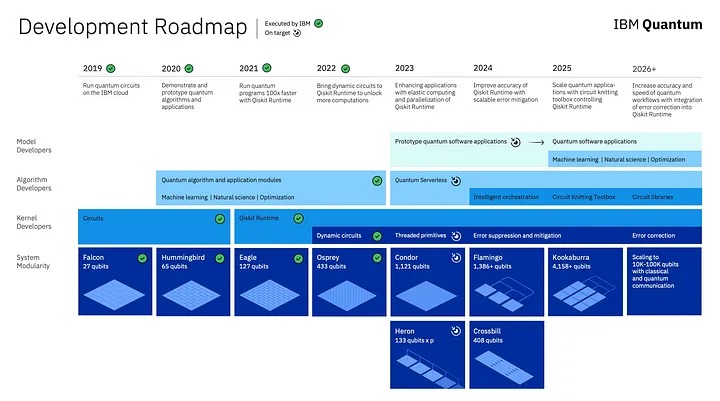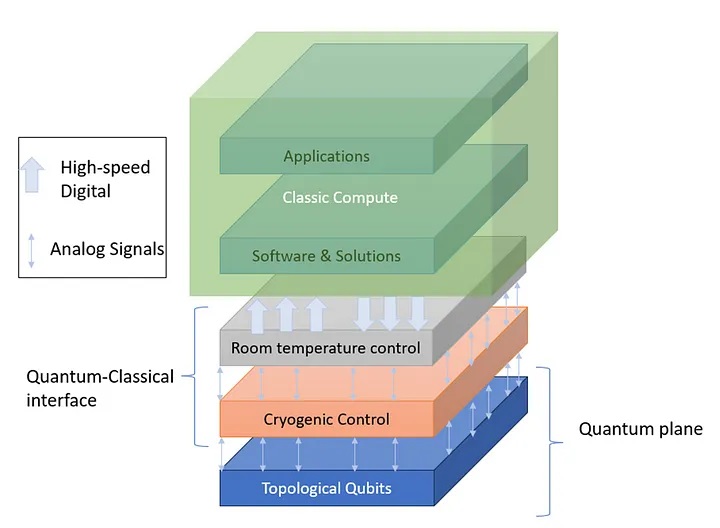Introduction
The world of computing has been constantly evolving since the invention of the first computers in the mid-20th century, and with it, our everyday lives have been transformed. Technology is rapidly changing how we interact with the world, from personal computers and smartphones to self-driving cars and AI. One of the most exciting and revolutionary advancements in this field is quantum computing, which promises to take the computing world by storm.
In this blog post, we will explore the basics of quantum computing, its potential applications, and its challenges in becoming a reality.
What is quantum computing?
Quantum computing is a radically different approach to computing, leveraging the unique principles of quantum mechanics to perform complex calculations at speeds far beyond the reach of classical computers. While classical computers use bits to represent information as either 0s or 1s, quantum computers use quantum bits or qubits, which can exist in multiple states simultaneously, thanks to the phenomena of superposition and entanglement.
Superposition allows qubits to exist in a combination of 0 and 1 simultaneously. At the same time, entanglement is the phenomenon in which the state of one qubit is dependent on the state of another, regardless of the distance between them. These unique properties enable quantum computers to perform an enormous number of calculations simultaneously, with each additional qubit exponentially increasing the computer’s power.
Why do we need quantum computers?
Quantum computers have the potential to solve some of the most challenging problems in science and technology that are beyond the reach of even the most powerful supercomputers today. These problems include:
- Cryptography: Quantum computing poses a significant threat to the security of current encryption techniques, as it can easily crack codes. However, it also promises the development of new, unbreakable encryption methods, ensuring the secure transmission of information.
- Drug Discovery: The ability of quantum computers to analyze and simulate molecular structures can significantly accelerate drug discovery, leading to more effective medicines and treatments.
- Artificial Intelligence: Quantum computing has the potential to transform the field of AI by enabling the development of more sophisticated machine learning algorithms, allowing AI systems to learn and adapt more efficiently.
- Climate Modeling: Quantum computers can help improve our understanding of climate change by processing vast amounts of data and running complex simulations to predict the impact of various factors on our planet’s climate.
- Optimization Problems: Quantum computing can be used to solve complex optimization problems in fields such as logistics, finance, and energy production, leading to more efficient solutions and significant cost savings.
Quantum computers could also enable discoveries and innovations we cannot even imagine today by opening up new possibilities for computation and communication.

IBM Quantum: The Road to Advantage for scaling quantum systems beyond old limitations and toward advantage
How do quantum computers work?
Quantum computers are based on physical systems that can act as qubits, such as atoms, photons, electrons, or superconducting circuits.

Microsoft: Topological quantum computing and the quantum stack
These systems must be carefully controlled and isolated from their environment to preserve their quantum coherence and avoid decoherence, which is the loss of quantum information due to noise and interference.
There are different ways of implementing quantum computers using various technologies and architectures. Some of the most promising ones are:
- Superconducting qubits: These circuits are made of superconducting materials with zero electrical resistance at very low temperatures. They can be manipulated by applying microwave pulses and coupled by sharing electrical currents or magnetic fields.
- Ion traps: These devices trap individual charged atoms using electric fields and lasers. They can be manipulated by applying laser pulses and coupled by exchanging photons or phonons (a unit of vibrational energy that arises from oscillating atoms within a crystal).
- Photonic qubits: These are particles of light that can be encoded with polarization or frequency. They can be manipulated by applying optical elements such as mirrors and beam splitters and coupled by interacting with other photons or matter.
- Each technology has advantages and disadvantages regarding scalability, fidelity, connectivity, speed, and cost. The challenge is finding the best trade-offs among these factors and integrating them into a coherent system that can run reliable and efficient quantum algorithms.
What are some of the current challenges and opportunities in quantum computing?
Quantum computing is still in its infancy and faces many technical and theoretical hurdles before it can achieve its full potential. Some of the main challenges are:
- Error Correction: Quantum systems are highly susceptible to errors due to their fragile nature and the influence of their surrounding environment. Developing efficient error correction techniques is critical to the reliability of quantum computers.
- Scaling up: Building large-scale quantum computers with enough qubits and gates to run practical applications is a significant challenge and requires advances in both hardware and software to ensure stable and efficient performance.
- Quantum Algorithms: Developing new algorithms specifically designed to harness the power of quantum computing is essential for realizing its full potential.
Conclusion
Quantum computing is undoubtedly one of the most exciting and revolutionary advancements in computing, with the potential to reshape the world we can only begin to imagine. While challenges remain, the progress made in recent years has been astounding, bringing us closer to real-world quantum applications. As we continue to explore the possibilities and overcome the obstacles, quantum computing promises to unlock new frontiers in science, technology, and beyond.
References:
- IBM Quantum access plans
- Amazon Braket : Accelerate quantum computing research
- Azure Quantum documentation
- Researchers make a quantum computing leap with a magnetic twist
- IBM Partnering with the University of Tokyo on Quantum Computer
- Amazon extends its quantum efforts with a focus on networking
- In a historic milestone, Azure Quantum demonstrates formerly elusive physics needed to build scalable topological qubits
- Google Quantum Computer Is ’47 Years’ Faster Than #1 Supercomputer
- IBM: Speed up your quantum experiments on our systems in the cloud with an efficient and low-latency architecture
- Microsoft Research Blog: Pioneering quantum hardware allows for controlling up to thousands of qubits at cryogenic temperatures
- Google: Discover the Quantum AI Campus
- Cirq: An open-source framework for programming quantum computers
